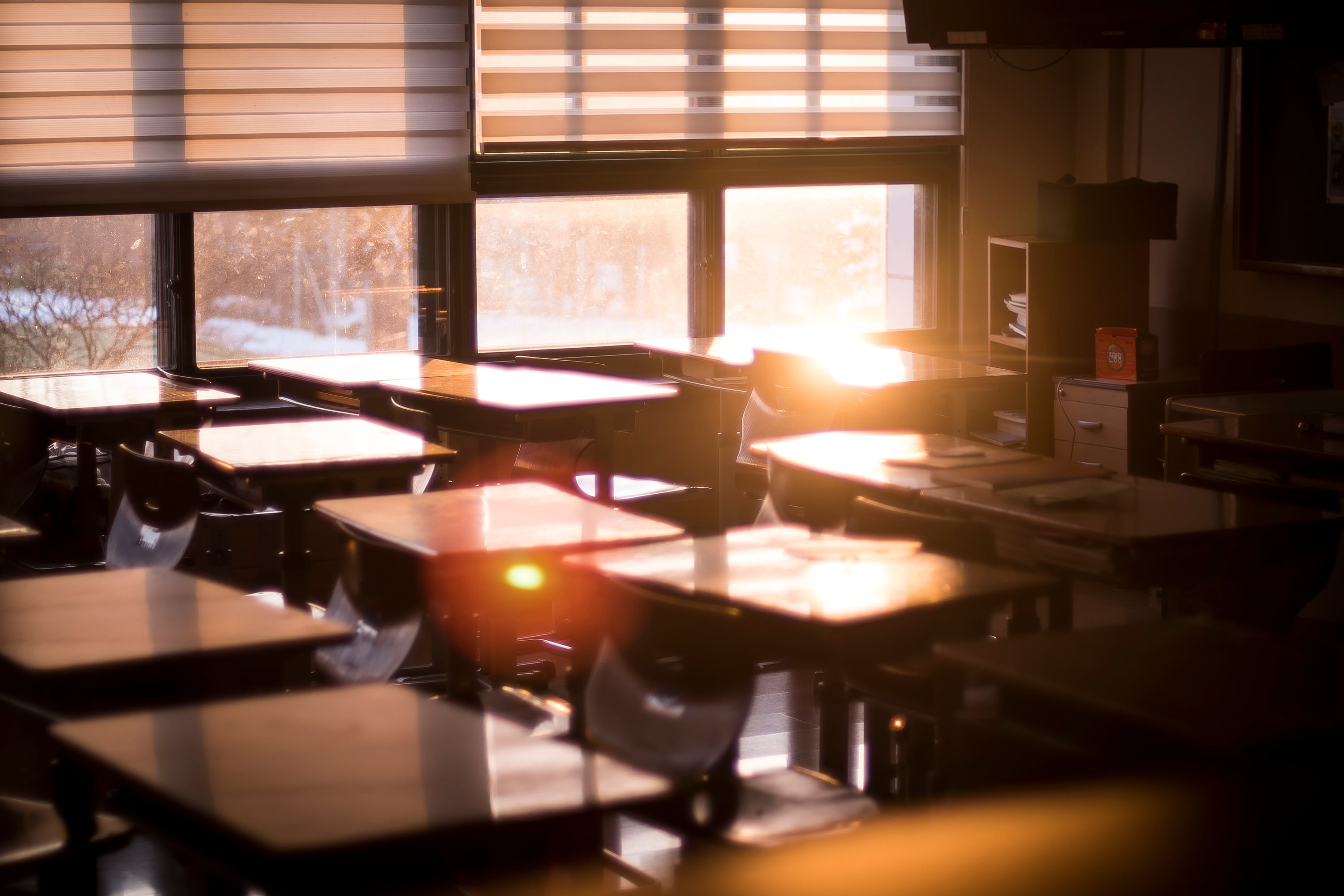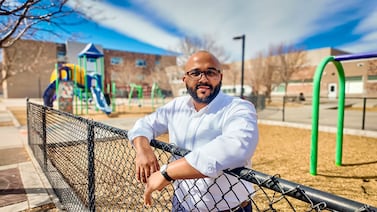This story about excessive heat in schools was produced by The Hechinger Report, a nonprofit, independent news organization focused on inequality and innovation in education. Sign up for Hechinger’s climate change and education newsletter.
With five children aged 11 to 24, Cyd Detiege has sent her kids to Palm Springs Unified School District in Southern California for nearly two decades.
“It’s gotten hotter,” she said, noting record-breaking temperatures in the desert city, which hit an all-time high of 124 degrees this July. The first day of school in Palm Springs this year was August 7, when temperatures reached 109 degrees. Since around 2019, Detiege says she’s contacted district officials, spoken at meetings, and posted on local Facebook pages with one goal: moving the first day of school to after Labor Day.
Across the U.S., climate change is influencing discussions about how, and when, kids are educated. School districts, teachers, parents, students, and experts are all considering how extreme heat is transforming education, and what changes need to happen for schools to adapt to extreme heat. In some places, this now includes reshaping what “back-to-school” means, as districts attempt to schedule the academic year around extreme heat.
America’s schools are vastly underprepared for extreme heat: An estimated 36,000 public schools don’t have adequate HVAC systems, and the combined costs of upgrading or installing necessary HVAC systems by 2025 is estimated at $4.4 billion nationally, according to the Center for American Progress, a left-leaning think tank. Even school districts with air conditioning may be exposing kids to excessive heat, allowing kids to play on hot outdoor blacktops without adequate shade for recess and lunchtime.
As districts work through the lengthy process of financing and planning these infrastructure upgrades, some hope that pushing back the first day of school could reduce school closures and other effects of extreme heat on students.
The impacts of heat on students’ health and learning is well-documented; studies have found that without air conditioning, every 1 degree Fahrenheit increase in temperature during a school year reduces the year’s learning by 1%. Unexpected school closures can leave parents scrambling for child care, and in some cases might send students to homes that are also hot and un-air conditioned.
Summers are getting longer, not just hotter
Since the early 1970s, demand for cooling during the back-to-school season has increased by an average of 32%, according to an analysis of 231 locations by the nonprofit Climate Central.
“It’s not just that we get extreme weather. It’s that our summers are literally longer,” said Joellen Russell, Thomas R. Brown Distinguished Chair of Integrative Science at the University of Arizona and member of Science Moms, a nonpartisan group of climate scientists who are also moms.
Most school districts are left on their own to plot out their state-dictated minimum days of instruction onto a calendar, while planning for holiday breaks and end-of-year testing, and balancing input from parents, teachers, and students.
In Palm Springs Unified School District, this calculation has landed students with a start date in the first week of August for the past several years, according to Joan Boiko, the district’s coordinator for communications and community outreach. This allows for a three-week winter break and a two-week spring break, and allows high schoolers to finish exams before winter break.
“While it is certainly warm here in the desert in August, it is typically just as hot in early September,” wrote Boiko in an email. Detiege, meanwhile, said she remains “very disappointed” in the calendar.
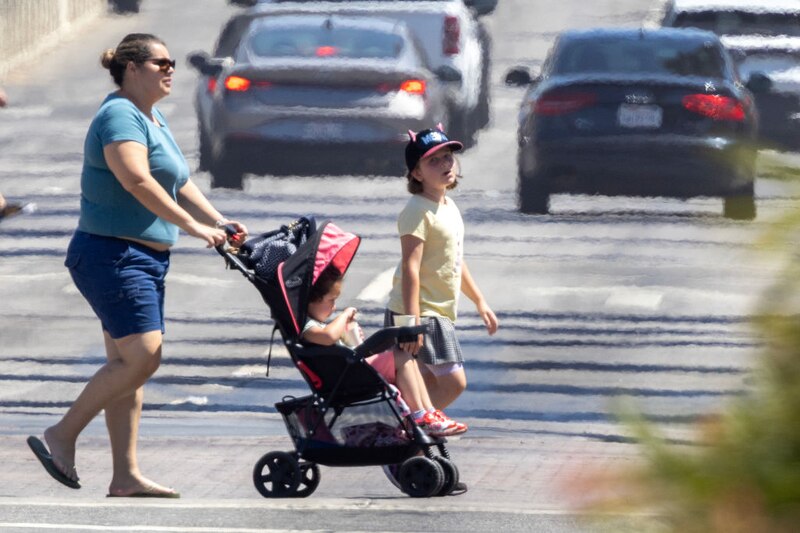
The neighboring Desert Sands Unified School District made a different decision. According to Jordan Aquino, assistant superintendent for business services at the district, planning for this school year included looking into what weeks are typically hottest. As a result, the district moved its first day back from the third to fourth week of August, pushing the last day of school further into June.
The two California desert districts have air conditioning, so students are primarily affected by heat on their way to and from school, at recess, during P.E., and at lunchtime. But in other regions of the country, districts are grappling with a need for air conditioning that didn’t exist when school buildings were first constructed. Nationwide, an estimated 41% of districts need to update or replace HVAC systems in at least half of their schools, according to a 2020 report from the U.S. Government Accountability Office.
In recent years, the lack of adequate HVAC systems has led to school closures and early dismissals as classrooms become too hot for students. School district leaders hope that proactively planning the school year around extreme heat will reduce some of these unexpected closures.
Pushing back start dates can mitigate heat — up to a point
Carrie A. Olson taught in classrooms without air conditioning for three decades in Denver Public Schools. When the weather got warm, she’d leave her classroom windows open overnight, allowing cool air to flow in. But this tactic is less effective with the climate change-driven rise in nighttime temperatures.
Denver has repeatedly asked voters to approve bond measures to install air conditioning in dozens of schools, a process that has taken years and still is not complete. Voters in 2020 approved a measure that covered air conditioning at 24 schools.
“But it still wasn’t everybody, and that rollover from when the bond was passed to when everything would be implemented was time-consuming,” said Olson, who has a doctorate in curriculum and instruction and now serves as president of the Denver Public Schools Board of Education.
Pushing back the first day of school by a week seemed like an interim solution, so the district did just that starting in the 2021-22 school year.
“At that time, it seemed like things were cooling off in mid- to late-August, and a week later would really help,” Olson said. A total of 29 schools are still without air conditioning in the district, and another bond measure is going before voters this fall.
Related: Teaching among the ashes: ‘It’s not just your home that’s burned, it’s everyone’s’
In Milwaukee, where only about one-fourth of public school classrooms have air conditioning, the district took a similar approach this year. Previously, Milwaukee’s high schools and most middle schools started in August and most elementary schools started in September. But when the district surveyed employees, parents, and students about the academic calendar last year, the biggest concern was air conditioning.
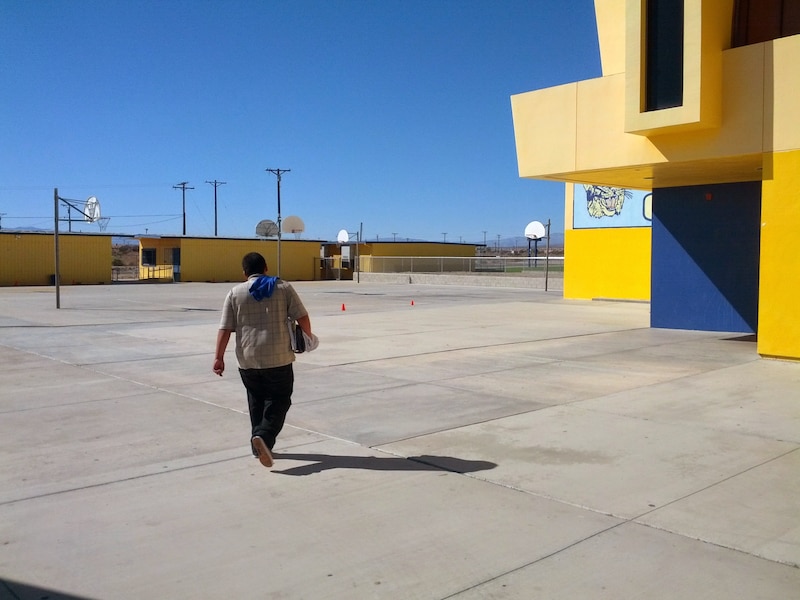
Moving all students to a September start date “would put the district in the best position to avoid excessive heat days during the upcoming school year,” said Milwaukee Public Schools Chief Human Resources Officer Adria Maddaleni during a December 2023 meeting. The change seems to have staved off some unexpected cancellations for the district, at least this school year: Heat indexes rose above 100 degrees in Milwaukee during the last week of August, forcing some private schools that were already in session to cancel classes.
“The reality is that it’s an OK solution, but it’s not perfect, because there are many school districts where you could get 100-degree days in November,” said V. Kelly Turner, associate director of the Luskin Center for Innovation at the University of California, Los Angeles, who also leads the new Center of Excellence for Heat Resilient Communities. “But the other thing is that the heat season isn’t just shifting, it’s getting longer.”
That brings up questions of how adjusting school calendars might affect summer break and students who don’t have air conditioning at home, said Turner. For example, for a student without air conditioning at home, spending a longer portion of the hottest days of summer at home would just mean staying in a hot home or apartment.
In Philadelphia, heat also came up as one of the biggest topics of discussion when the district planned the 2023-24 and 2024-25 calendars, with survey responses from parents, students, teachers and others showing a preference for a post-Labor Day start date. “Beginning school after Labor Day avoids possible school closures due to excessive heat,” according to a document prepared for a February 2023 school board meeting. The board voted that month to start 2023-24 after Labor Day, but to begin the 2024-25 school year in August due to scheduling limitations. The district now aims to start after Labor Day “whenever possible,” while also working to expand cooling systems, according to the board meeting document.
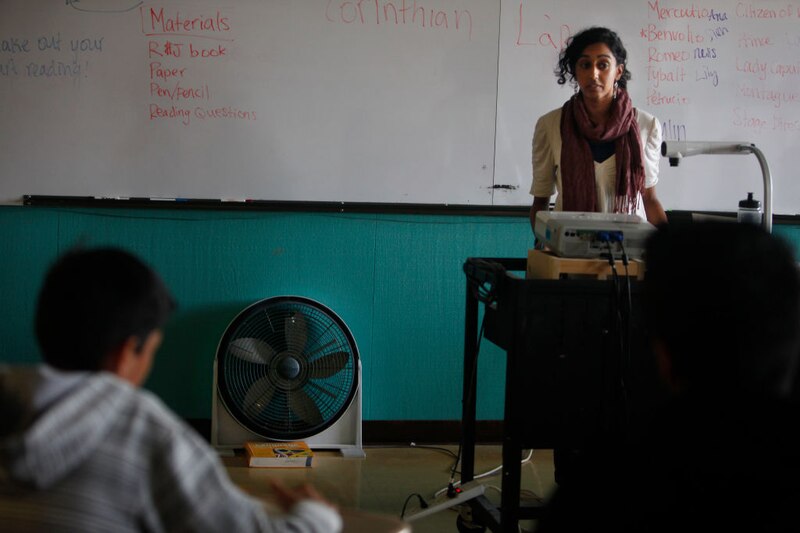
The School District of Philadelphia has made gains in cooling its aging buildings, including through a donation from Philadelphia Eagles quarterback Jalen Hurts that added air conditioning units to 10 schools this year. But 63 schools still lack adequate cooling and close early when weather is expected to reach 85 degrees by noon, according to Monique Braxton, deputy chief of communications for the district.
Philadelphia dismissed schools early in 2023 and 2024 due to heat during the first week of school. Last year, 73 schools received early dismissal during the entire first week of school after Labor Day, and this year, the 63 remaining schools without adequate cooling dismissed early on Aug. 27 and Aug. 28.
Many schools need air conditioning, infrastructure upgrades
Experts on heat and schools say scheduling academic calendars around extreme heat comes with limitations. In much of the country, August typically experiences hotter days than June, but pushing back the first day of school still risks pushing the school year further into June, which also experiences temperatures high enough to cancel school. And with temperatures projected to keep getting higher on both ends of the academic calendar, relying on scheduling alone to address extreme heat would be a constant shuffle.
“I think that the degree that you would need to push back the school year will become greater and greater every year, unless we figure out how to adapt the structures that kids are learning in, and make the investments in updating this older infrastructure, because temperatures will continue to increase,” said Lindsey Burghardt, chief science officer at the Center on the Developing Child at Harvard University.
The University of Arizona’s Russell called the strategy a “temporary stopgap” to extreme heat.
Related: Extreme heat is making schools hotter — and learning harder
Federal money is available now for HVAC upgrades; the Inflation Reduction Act included a provision that will reimburse schools that install heat pumps and other clean energy technologies, according to Jonathan Klein, co-founder and CEO of Undauntedk12, an organization focused on supporting schools’ transition to clean energy. Some districts also used federal COVID relief aid to improve HVAC systems, according to Liz Cohen, policy director at FutureEd, although she said it’s hard to know for sure how many districts used the funds for those upgrades due to different reporting requirements in each state.
In Denver, Olson said the board hasn’t considered pushing the start date back even further into August or September.
“Just thinking about the shift in our climate across our planet, shifting the calendar isn’t going to be as helpful as it was three years ago when we passed this,” said Olson. “The solution is going to be to get more heat mitigation strategies and air conditioning in our schools with an eye toward sustainability.”
This story about excessive heat in schools was produced by The Hechinger Report, a nonprofit, independent news organization focused on inequality and innovation in education. Sign up for Hechinger’s climate change and education newsletter.

